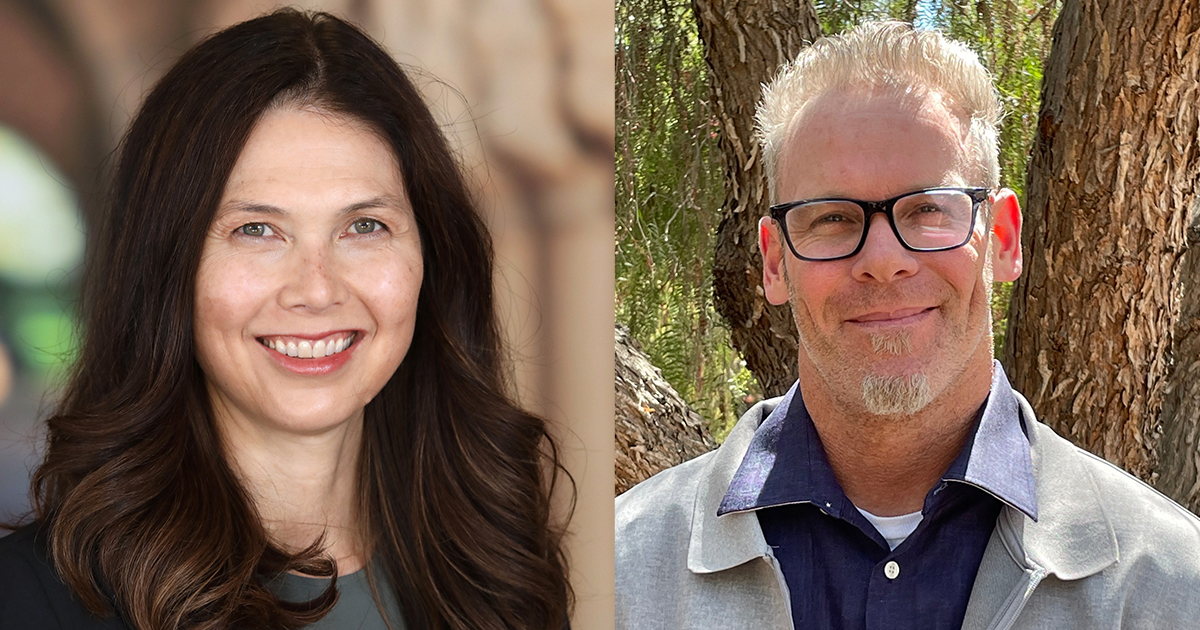Author: Jill Schlessinger
World War II-era Japanese American Incarceration: A Guide to the Oral History Center’s Work
Anthology created by the Oral History Center
Research by Sari Morikawa, Serena Ingalls, and Timothy Yue, undergraduate researchers
After the entrance of the United States into World War II, President Franklin D. Roosevelt signed Executive Order 9066 on February 19, 1942, which mandated the forced removal of Japanese Americans from their homes on the West Coast into incarceration camps inland for the duration of the war. This forced removal uprooted families, disrupted businesses, and dispersed communities — impacting generations of Japanese Americans. The Oral History Center, or the OHC, and other archival collections in The Bancroft Library, feature several projects on this chapter of American history, comprising hundreds of interviews, photographs, artifacts, graphic illustrations, and podcasts for use by scholars and the public.
Find these interviews and all our oral histories from the search feature on our home page. You can search by name, keyword, and several other criteria. Find all the oral history projects mentioned here, along with more in-depth descriptions, on our projects page.
There are six parts to this collection guide to Oral History Center and other Bancroft Library resources:
- Projects about Japanese American incarceration
- Related projects
- Individual interviews
- How to search our collection
- Selected articles that highlight and synthesize this work
- Acknowledgements
Part 1: Projects about Japanese American Incarceration
Japanese American Intergenerational Narratives
The Japanese American Intergenerational Narratives Oral History Project is the OHC’s newest project on this subject, consisting of interviews with child survivors and descendants of those who were incarcerated. The project documents the ways in which intergenerational trauma and healing occurred after the United States government’s incarceration of Japanese Americans during World War II. Conducted by Roger Eardley-Pryor, Shanna Farrell, and Amanda Tewes, these interviews examine and compare how private memory, creative expression, place, and public interpretation intersect at sites of incarceration. Initial interviews focus on the Manzanar and Topaz prison camps, and pose a comparison through the lens of place, popular culture, and collective memory. Exploring narratives of healing as a through line, these interviews investigate the impact of different types of healing, how this informs collective memory, and how these narratives change across generations. The first set of interviews, comprised of 100 hours of oral history interviews with 23 narrators, continues to grow with interviews featuring child survivors and descendants of the Heart Mountain and Tule Lake prison camps.
“‘Dad, were you put in the camps?’ They didn’t talk about it. It was something you didn’t bring up…. He was honest but then he said, ‘But that happened in the past. You don’t need to dwell.’”
—Peggy Takahashi, on intergenerational silence related to her family’s incarceration
The project includes interpretive materials as well. Season eight of The Berkeley Remix, the OHC’s podcast based on oral history, explores themes from the project’s initial oral histories. “‘From Generation to Generation’: The Legacy of Japanese American Incarceration,” is a four-episode season featuring stories of activism, contested memory, identity and belonging, as well as artistic expression and memorialization of incarceration. In addition, ten graphic narrative illustrations created by artist Emily Ehlen vividly express the experiences of Japanese American incarceration during World War II and its effects on future generations. The interpretive materials, along with the oral histories, are available for use in classrooms.
Japanese American Confinement Sites
Interviews in the Japanese American Confinement Sites Oral History Project document the experiences of Japanese Americans who were incarcerated during World War II, including UC Berkeley students who attended college before or after the war. Themes running through these interviews include the experiences of forced relocation and incarceration; loss of property and livelihoods; identity; education; challenges faced after the end of the war; and emotional responses to their experiences. Many of the narrators went into fields such as public service, the military, advocacy, art, and education; some of them participated actively in the redress movement.
“Never again should there be such an event as a mass removal of an entire group of people without due process of law. … I try to pass that message on to as many people as I can.”
—Sam Mihara explains why he decided to become a speaker and share his stories
The voices of these narrators are brought to life in the slideshow: “The Uprooted: The Incarceration of Japanese Americans.” This slideshow was made to accompany the 2021–2022 exhibition in The Bancroft Library Gallery, “Uprooted: The Incarceration of Japanese Americans.” All photographs were drawn from the War Relocation Authority Photographs of Japanese American Evacuation and Resettlement, 1942–1945, The Bancroft Library, University of California, Berkeley, BANC PIC 1967.014–PIC. The oral histories are from the Japanese American Confinement Sites Oral History Project.
Japanese-American Relocation Reviewed
Japanese-American Relocation Reviewed is a multi-interview volume of oral histories from the Earl Warren in California project, dedicated to a discussion of Japanese American incarceration. In “Volume I: Decision and Exodus,” staff of the Justice Department, legal advisors to the US Army, and US and California State attorneys discuss the role of the US Department of Justice and the Western Defense Command in defining and administering policy towards enemy nationals, California Attorney General Earl Warren’s role in the forced removal of Japanese Americans to incarceration camps, the civil defense program, martial law, and the development of a constitutional argument for forced removal.
“We kept saying that we won’t do it and haven’t got the authority to do it. And there are enough precedents, you know with Lincoln suspending the writ of habeas corpus, that if the military wanted to do it, they could do it. But we frankly never thought they would. We thought they were too damn busy getting the troops to go fight a war some place else. That was our mistake.”
—James Rowe, assistant to United States Attorney General Francis Biddle
In “Volume II: The Internment,” members of the War Relocation Authority discuss the authority, selection, and administration of incarceration camp sites; resettlement out of the incarceration camps; origin and activities of the Pacific Coast Committee on American Principles and Fair Play. It also includes an appended interview with a wartime YWCA national board member on Idaho’s Minidoka camp in 1943; an address given by Robert B. Cozzens in 1945, “The Future of America’s Japanese;” and reproductions of Hisako Hibi’s paintings of Tanforan and Topaz.
The Office of Redress Administration Oral History Project
In 1988, President Ronald Reagan signed the Civil Liberties Act, a historic piece of legislation that sought, for the first time, to provide a measure of justice to Japanese Americans forty-six years after their incarceration during World War II. Over its decade-long operation (1988–1998), the Office of Redress Administration reached over 82,000 people with a redress payment and official apology letter from the President of the United States. Redress: An Oral History Project, by Emi Kuboyama, project creator and interviewer, with Todd Holmes, Oral History Center historian and interviewer, documents the complex history of Japanese American redress. The film, Redress, provides the first in-depth look at the historic program as told by both those who administered and participated in it. Additional educational materials supplement the film by providing historical overviews of the Japanese American experience and redress program, as well as a list of resources for further study and discussion. The project received the generous support of the Henri and Tomoye Takahashi Foundation and the National Park Service, US Department of Interior.
The Japanese American Evacuation and Resettlement Records and Japanese American Relocation Digital Archive
The Bancroft Library’s documentation of the Japanese American experience during World War II includes thousands of primary source materials drawn from an extensive collection of manuscripts, photographs, as well as audio and video. The Japanese American Evacuation and Resettlement Records, accessible through the Online Archive of California, consists of surplus copies of U.S. War Relocation Authority agency documents, including publications, staff papers, reports, correspondences, press releases, newspaper clippings, scrapbooks and a few photographs. Included is the Japanese American Evacuation and Resettlement Study, University of California, Berkeley, 1942-1946, containing diaries, letters and staff correspondence, reports and studies. These records include 250.5 linear feet (335 boxes, 84 cartons, 41 oversize volumes (folios), 7 oversize folders, 2 oversize boxes; 380 microfilm reels; 5,660 digital objects) (BANC MSS 67/14 c). The related Finding Aid to the Japanese American Evacuation and Resettlement Records 1930-1974 provides additional detail about the collection, including acquisition information, historic notes, scope, and contents.
In addition, Calisphere hosts the Japanese American Relocation Digital Archive (JARDA), which contains thousands of primary sources documenting Japanese American incarceration, including: personal diaries, letters, photographs, and drawings; US War Relocation Authority materials, including newsletters, final reports, photographs, and other documents relating to the day-to-day administration; and personal histories documenting the lives of the people who were incarcerated in the camps, as well as of the administrators who created and worked there. Curated by the University of California, JARDA makes accessible materials from libraries, museums, archives, and oral history programs across California.
Part 2: Related Projects
Rosie the Riveter World War II American Home Front Oral History Project
The Rosie the Riveter World War II American Home Front Oral History Project comprises more than 200 interviews with women and men about the home front experience in the Bay Area. Many of the interviews in these projects include either brief references to or longer discussions about the World War II-era incarceration of Japanese Americans, and cover a broad range of experiences from a multiplicity of perspectives. Some interviews feature individuals who were incarcerated, while other interviews feature Japanese Americans in Hawaii and elsewhere who were not, but who recalled being affected by fear and prejudice. Other interviews include people who were friends, classmates, neighbors, and coworkers, who recalled the forced removal, and the emotions they experienced. Some of these acquaintances were troubled or appalled, whereas others were relieved and thought it justified. Some took care of farms and property until their neighbors returned; others benefited financially. Some go into great detail about race relations in farming and other communities throughout California.
“We used to say, now, why did they make all the Japanese pilots look so ugly?”
—Gladys Okada, in reference to World War II American war films
Volumes about Earl Warren
Two projects, Earl Warren in California and Law Clerks of Earl Warren, center around Earl Warren, who was California’s attorney general (1939–43) and governor (1943–53), before becoming chief justice of the Supreme Court (1953–69), and include an interview with Warren himself. The California project focuses on the years 1925–53, and documents the executive branch, the legislature, criminal justice, and political campaigns; Warren’s life; and changes in California during this period. The California project includes numerous multi-interview volumes that address different issues, including two volumes on labor, exploring Warren from the perspective of union members and labor leaders. The Law Clerks project comprises interviews of more than 40 of Warren’s law clerks; these narrators discuss watershed cases, the evolution of constitutional law, and other issues related to the court. Among other subjects, issues that arose in the interviews in these projects included the ways in which the narrators responded to the executive order; economic, military, and other motivations for the order; the process of identifying individuals and where they lived; reparations; economic consequences; and reflections on Warren’s actions and opinions. Earl Warren himself, in his interview, Conversations with Earl Warren on California Government, briefly addresses the incarceration and aftermath, including enforcement and other issues related to the Alien Land law, preparation of maps documenting where Japanese nationals and Japanese Americans lived, rationale for incarceration, reparations, and return from the camps.
“‘We urge you to appoint immediately a trustee to hold in trust all the properties of the Japanese in this state… lest they be taken over by the wolves.’ They didn’t do anything. All the wolves came in and took over their property.”
—Richard Perrin Graves, executive of the League of California Cities and member of the Ninth Regional Civil Defense Board, on his telegram to the US attorney general
Related Papers
The Bancroft Library and greater UC Berkeley Library have extensive collections that address Japanese American incarceration during World War II and related matters. Here are a few. The complete files of the Fair Play Committee (Pacific Coast Committee on American Principles and Fair Play) are held in the library and include a comprehensive file of newspaper clippings from West Coast publications. The papers of Senator Hiram W. Johnson have information on land laws and Asian immigration. Senator James D. Phelan‘s records document anti-Japanese sentiment in the 1920s. The papers of Robert W. Kenny, who succeeded Earl Warren as attorney general in 1943, have information on law enforcement questions in the aftermath of forced relocation.
Part 3: Individual interviews
“We can’t deny that the black people who lived in the Western Addition moved into places that were vacated because [of] the Japanese Americans who were put into internment camps. Our relationship with Japanese Americans is somehow affected by that history.”
—Carl Anthony, architect and environmental justice activist
Dozens of individual interviews scattered throughout the Oral History Center archive, with people from different backgrounds and walks of life, also detail many facets of this chapter in history. Although they were interviewed about other matters, the narrators in their oral histories in some way addressed Japanese American incarceration — sometimes only in passing, at other times more in depth. Some of the more well-known narrators include the following. Photographers Ansel Adams and Dorothea Lange discuss the artistic process, the ownership of their photographs, and the conditions in the camps. Willie Brown, speaker of the California Assembly and mayor of San Francisco, and Carl Anthony, architect and environmental justice activist, address race relations and how some black communities may have benefited from the forced relocation of Japanese Americans. Thomas Chinn, a historian and publisher of the Chinese Digest, discusses the evolution of race relations between Chinese and Japanese Americans in the United States, and noted that after Pearl Harbor, some people in Chinese communities wanted to distinguish themselves in order to avoid the same fate. Japanese American artist Ruth Asawa details her father being taken away by the FBI, her family’s subsequent incarceration, and the role incarceration played in her development as an artist.
“All this equipment my father had gathered — the books, everything that had to do with Japan — they just made a big bonfire and burned all of that. Everybody had panicked at that time. My sister cried and she said, ‘Oh, please don’t, don’t burn the books.’”
— Ruth Asawa, artist, on the fear her family experienced after her father was taken away
The best way to find individual OHC interviews that address any subject is to search by keyword from the search feature on our home page. Use as many keywords as you can think of (one at a time) that might relate to the topic. When you get to the results page, you will see a list of oral histories. Click on any one to get to detailed metadata about that oral history, plus access to the PDF of the oral history itself. As a first step, the abstract provides an overview of the major themes in the oral history. For a more comprehensive look, you can open the oral history directly from this page within digital collections; then use the search feature from within the oral history to find keywords. The oral history will also have a table of contents, and some also have an interview history and other front matter that will provide more information.
Part 4: How to search our collection:
Browse and access all of the oral history projects mentioned in this collection guide from the Oral History Center’s projects page. The projects page will provide a description of the project, and a list of all the oral histories on that project in the UC Library’s digital collections. To search the OHC’s archive by name, keyword, and other criteria, go to the OHC search feature on our home page. The OHC’s guides to various subjects in our collection can be accessed from the collections guide page. If you’re interested in making a documentary, podcast, or in undertaking other creative endeavors, you can access the audio/video and any related photos or ephemera through The Bancroft Library. You will need to open an account to order and access materials in the Reading Room. And here is more information about Rights and Permissions.
Explore collections related to Japanese American incarceration during World War II at all UC campuses by going to the UC Library Search. To explore all holdings from The Bancroft Library, go to the Advanced Search option from the Library Search page, and check “UC Berkeley Special Collections and Archives,” then search by keyword and other criteria.
Part 5: Selected articles that highlight and synthesize this work
The Oral History Center Presents the Japanese American Intergenerational Narratives Project, by Shanna Farrell
The Oral History Center Presents The Berkeley Remix Season 8: “‘From Generation to Generation’: The Legacy of Japanese American Incarceration” by Amanda Tewes
Graphic Narrative Art by Emily Ehlen from OHC’s Japanese American Intergenerational Narratives Oral History Project, by Roger Eardley-Pryor
Q&A with Artist Emily Ehlen on Illustrating the OHC’s Japanese American Intergenerational Narratives Oral History Project, by Roger Eardley-Pryor
New podcast series explores the legacy of Japanese American incarceration: Read a Q&A with the Oral History Center’s Shanna Farrell about the Project, by UC Berkeley News reporter Anne Brice
‘I knew I had to draw it’: Illustrator brings to life testimonies of Japanese Americans incarcerated during WWII and their descendants in new Oral History Center project, by Dan Vaccaro, writer for UC Library Communications
Interconnections, by Roger Eardley-Pryor
Out of the Archives: Patrick Hayashi: From Mail Carrier to Associate President to Artist, by UC Berkeley undergraduate research apprentice Zachary Matsumoto
OHC URAP Student Zachary Matsumoto Reflects on Work with Japanese American Intergenerational Narratives Project, by UC Berkeley undergraduate research apprentice Zachary Matsumoto
‘Never again’: Library exhibit tells story of WWII Japanese American incarceration, sounds alarm on importance of remembering by Dan Vaccaro, writer for UC Library Communications
Oral history project highlights the little-known Japanese American redress program, by UC Berkeley News reporter Anne Brice
Redress: A film about the Office of Redress Administration by Edna Horiuchi in Discover Nikkei
Janet Daijogo: Japanese Incarceration and Finding Her Place through Aikido and Teaching, by UC Berkeley undergraduate and Oral History Center research assistant Deborah Qu
Bury the Phonograph: Oral Histories Preserve Records of Life in Hawaii During World War II, by UC Berkeley undergraduate and Oral History Center editorial assistant Shannon White
Part 6: Acknowledgements
National Park Service, Department of Interior
The following projects were funded, in part, by a grant from the US Department of the Interior, National Park Service, Japanese American Confinement Sites Grant Program. The views and conclusions contained in this document are those of the authors and should not be interpreted as representing the opinions or policies of the US Government. Mention of trade names or commercial products does not constitute their endorsement by the US Government.
Japanese American Confinement Sites Oral History Project
Japanese American Intergenerational Narratives Oral History Project
Japanese American Evacuation and Resettlement Records
Office of Redress Administration Oral History Project
Henri and Tomoye Takahashi Foundation
The Office of Redress Administration Oral History Project received generous support from the Henri and Tomoye Takahashi Foundation. The foundation also provided generous support for a second phase of interviews for the Japanese American Intergenerational Narratives Oral History Project.
About the Oral History Center
UC Berkeley’s Oral History Center, or the OHC, is one of the oldest oral history programs in the world. We produce carefully researched, recorded, and transcribed oral histories and interpretive materials for the widest possible use. Since 1953 we have been preserving voices of people from all walks of life, with varying perspectives, experiences, pursuits, and backgrounds. We are committed to open access and our oral histories and interpretive materials are available online at no cost to scholars and the public. You can find our oral histories from the search feature on our home page. Search by name, keyword, and several other criteria. Sign up for our monthly newsletter featuring think pieces, new releases, podcasts, Q&As, and everything oral history. Access the most recent articles from our home page or go straight to our blog home.
Please consider making a tax-deductible donation to the Oral History Center if you would like to see more work like this conducted and made freely available online. The Oral History Center is a predominantly self-funded research unit of The Bancroft Library. As such, we must raise the funds to cover the cost of all the work we do, including each oral history. You can give online, or contact us at ohc@berkeley.edu for more information about our funding needs for present and future projects.
Sign up for the Oral History Center’s Advanced Institute (August 5–9)
The UC Berkeley Oral History Center is pleased to announce that applications are open for the 2024 Advanced Institute!
The OHC is offering online versions of our educational programs again this year.
Advanced Institute: M–F, August 5–9, 8:30 a.m.–2 p.m., via Zoom
We are now accepting applications for our 2024 Advanced Institute on a rolling basis. Please apply early, as spots fill quickly.
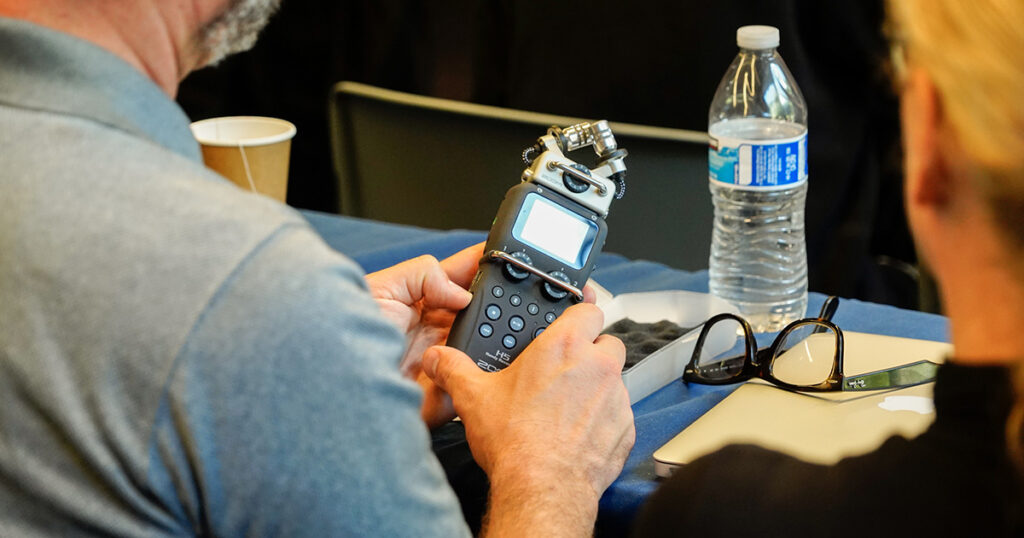
The Oral History Center is offering a virtual version of our one-week Advanced Institute on the methodology, theory, and practice of oral history. This will take place Aug. 5-9, 2024.
The institute is designed for graduate students, postdoctoral fellows, university faculty, independent scholars, and museum and community-based historians who are engaged in oral history work. The goal of the institute is to strengthen the ability of its participants to conduct research-focused interviews and to consider special characteristics of interviews as historical evidence in a rigorous academic environment.
We ask that applicants have a project in mind that they would like to workshop during the week. All participants are required to attend small daily breakout groups in which they will workshop projects.
In the sessions, we will devote particular attention to how oral history interviews can broaden and deepen historical interpretation situated within contemporary discussions of history, subjectivity, memory, and memoir.
Apply for the Advanced Institute.
Overview of the week
The institute is structured around the life cycle of an interview. Each day will focus on a component of the interview, including foundational aspects of oral history, project conceptualization, the interview itself, analytic and interpretive strategies, and research presentation and dissemination.
Instruction will take place online tentatively from 8:30 a.m. to 2 p.m. Pacific time, with breaks woven in. There will be three sessions a day: two seminar sessions and a workshop. Seminars will cover oral history theory, legal and ethical issues, project planning, oral history and the audience, anatomy of an interview, editing, fundraising, and analysis and presentation. During workshops, participants will work throughout the week in small groups, led by faculty, to develop and refine their projects.
Participants will be provided with a resource packet that includes a reader, contact information, and supplemental resources. These resources will be made available electronically prior to the institute, along with the schedule.
Applications and cost
The cost of the institute is $600. We are offering a limited number of participants a discounted tuition of $300 for students, independent scholars, or those experiencing financial hardship. If you would like to apply for discounted tuition, please indicate this on your application form and we will send you more information.
Please note that the OHC is a soft-money research office of the university, and as such receives precious little state funding. Therefore, it is necessary that this educational initiative be a self-funding program. Unfortunately, we are unable to provide financial assistance to participants other than our limited number of scholarships. We encourage you to check in with your home institutions about financial assistance; in the past we have found that many programs have budgets to help underwrite some of the costs associated with attendance. We will provide receipts and certificates of completion as required for reimbursement.
Applications are accepted on a rolling basis. We encourage you to apply early, as spots fill up quickly.
Questions
Please contact Shanna Farrell (sfarrell@library.berkeley.edu) with any questions.
About the Oral History Center
UC Berkeley’s Oral History Center, or the OHC, is one of the oldest oral history programs in the world. We produce carefully researched, recorded, and transcribed oral histories and interpretive materials for the widest possible use. Since 1953 we have been preserving voices of people from all walks of life, with varying perspectives, experiences, pursuits, and backgrounds. We are committed to open access and our oral histories and interpretive materials are available online at no cost to scholars and the public.
Sign up for our monthly newsletter featuring think pieces, new releases, podcasts, Q&As, and everything oral history. Access the most recent articles from our home page or go straight to our blog home.
Sign up for the Oral History Center’s Introductory Workshop (March 8)
The UC Berkeley Oral History Center is pleased to announce that applications are open for the 2024 Introductory Workshop!
The OHC is offering online versions of our educational programs again this year.
Introductory Workshop: Friday, March 8 from 8:30 a.m. to 2:30.p.m. Pacific Time, via Zoom
The 2024 Introduction to Oral History Workshop will be held virtually via Zoom on Friday, March 8, from 8:30 a.m. to 2:30.p.m. Pacific Time, with breaks woven in. Applications are now being accepted on a rolling basis. Please apply early, as spots fill up quickly.
Apply for the Introductory Workshop.
This workshop is designed for people who are interested in an introduction to the basic practice of oral history and in learning best practices. The workshop serves as a companion to our more in-depth Advanced Oral History Summer Institute held in August.
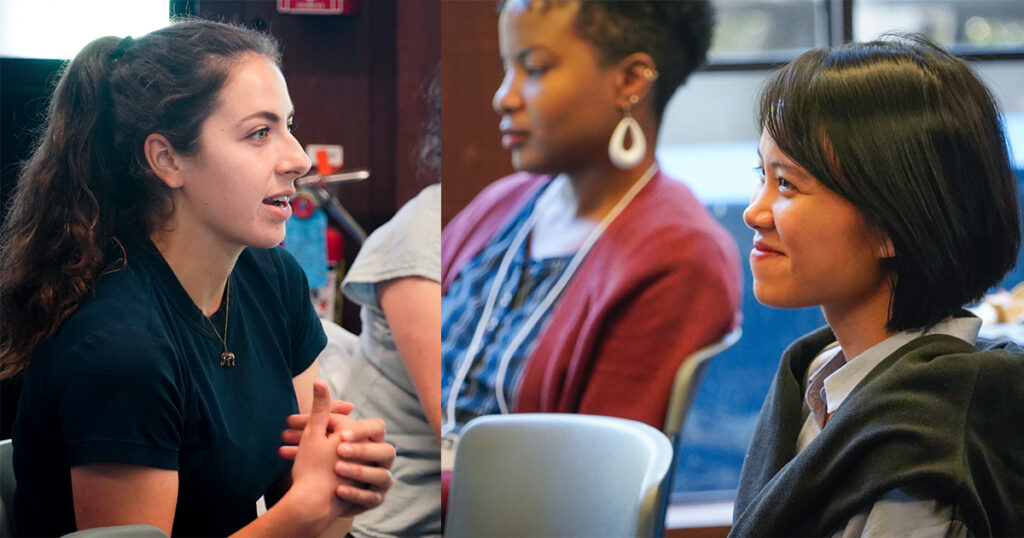
The workshop focuses on the foundational elements of oral history, including methodology and ethics, practice, and recording. It will be taught by our seasoned oral historians and include hands-on practice exercises. Everyone is welcome to attend the workshop. Prior attendees have included community-based historians, teachers, genealogists, public historians, and students in college or graduate school.
Tuition is $150. We are offering a limited number of participants a discounted tuition of $75 for students, independent scholars, or those experiencing financial hardship. If you would like to apply for discounted tuition, please indicate this on your application form and we will send you more information. Please note that the OHC is a soft-money research office of the university, and as such receives precious little state funding. Therefore, it is necessary that this educational initiative be a self-funding program. Unfortunately, we are unable to provide financial assistance to participants other than our limited number of scholarships. We encourage you to check in with your home institutions about financial assistance; in the past we have found that many programs have budgets to help underwrite some of the costs associated with attendance. We will provide receipts and certificates of completion as required for reimbursement.
Applications are accepted on a rolling basis. We encourage you to apply early, as spots fill up quickly.
If you have specific questions, please contact Shanna Farrell (sfarrell@library.berkeley.edu)
About the Oral History Center
UC Berkeley’s Oral History Center, or the OHC, is one of the oldest oral history programs in the world. We produce carefully researched, recorded, and transcribed oral histories and interpretive materials for the widest possible use. Since 1953 we have been preserving voices of people from all walks of life, with varying perspectives, experiences, pursuits, and backgrounds. We are committed to open access and our oral histories and interpretive materials are available online at no cost to scholars and the public.
Sign up for our monthly newsletter featuring think pieces, new releases, podcasts, Q&As, and everything oral history. Access the most recent articles from our home page or go straight to our blog home.
The Bancroft Library offers fellowships to support research in our special collections
We invite graduate students, undergraduates, and independent scholars to apply by Feb. 5, 2024
The Bancroft Library at UC Berkeley is pleased to announce we are now accepting applications for our 2024-25 fellowships and awards, available to graduate students, undergraduates, and independent scholars conducting research in our special collections. The Bancroft Library is committed to fostering a diverse and inclusive research environment, and seeks to support students and scholars using the collections both for traditional archival and bibliographic research, as well as those wishing to use the collections for creative projects.
Applications are due February 5, 2024, at 5 p.m., with decisions to be made by early April 2024.
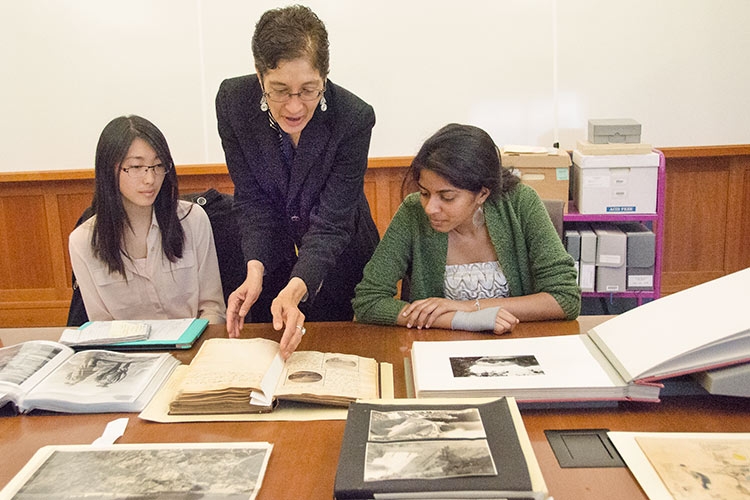
Research areas
Several fellowships offer funding for research that would benefit from the use of any source materials in The Bancroft Library. Other fellowships are focused around specific subject areas. Our fellowships and awards range in amounts.
Our 2024-25 fellowships and awards are in the following research areas:
- Research that would benefit from the use of any source materials in the Bancroft
- History of California
- Nineteenth century American West and related topics
- Jewish experience in California from 1848 to 1915
- Print culture in any part of the Western Hemisphere, or any investigation of the history of the book in the Americas
How to apply
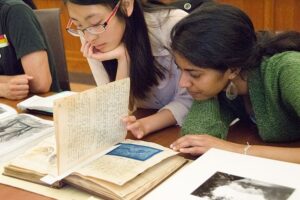
Our Fellowships and Awards website has details about all the eligibility criteria for each fellowship or award, and the application process. Some opportunities are designated for Berkeley undergraduates, some for graduate students at any University of California campus, and some are open to students at any college or university or independent scholars —complete descriptions are on the website.
Please share this announcement with undergraduate and graduate students, and anyone else who may be interested in The Bancroft Library’s fellowship program.
About the Bancroft Library
The Bancroft Library is the primary special collections library at UC Berkeley, and one of the largest and most heavily used libraries of manuscripts, rare books, and unique materials in the United States. Bancroft supports major research and instructional activities and plays a leading role in the development of the university’s research collections.
Since Bancroft is a reference library, its collections are non-circulating, which means they are only available for your use in the Heller Reading Room. Fellowships and Awards facilitate this in-person research.
The Bancroft Library welcomes researchers from the UC Berkeley campus, nationally, and from around the world. Our holdings currently include: more than 600,000 volumes; 60 million manuscript items; 8 million photographs/pictorial materials; over 3 million digital files; 43,000 microforms; and 23,000 maps.
People worldwide can access Bancroft’s digital collections, which include digitized materials from the library’s extensive and ever-growing holdings, as well as born digital materials collected as part of our archival manuscript and pictorial collections.
Luella Lilly: Cal’s first and only Director of Women’s Athletics
By William Cooke
In 1976, Luella “Lue” Lilly became the first and only athletic director of the newly created Women’s Intercollegiate Athletic Department at Cal. Over the course of her 17-year tenure, eight of the women’s sports programs won a combined 28 conference championships. In 1989, USA Today ranked Cal’s women’s athletics program number four overall in the nation. Today, several women’s programs are consistently among the best in the country and Cal female athletes, former and current, compete in the Olympic Games.
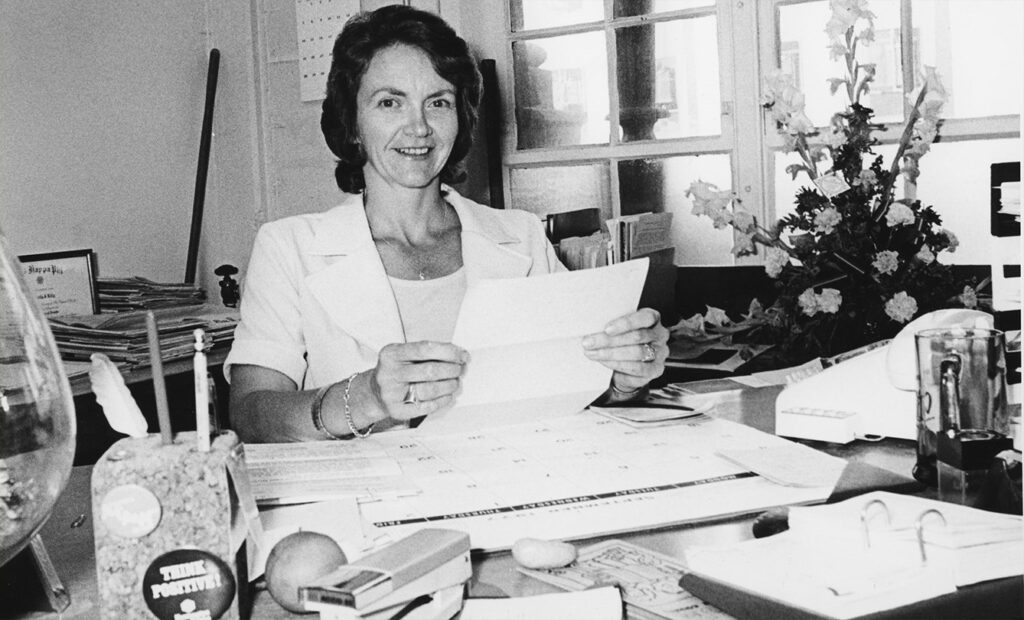
Now one of the premier destinations for elite female student athletes, Cal has come a long way from being one of the last universities in the country to create a women’s athletics department and offer scholarships to female athletes. That history starts with Lilly.
You don’t try to keep up with Joneses. You figure out where the Joneses are going to go and get there before they do. And that was my philosophy. —Luella Lilly
Lilly had a steep mountain to climb when she first arrived at Berkeley. Ongoing budget constraints, competition over the use of limited sports facilities, and tensions between departments meant that she could not fight every battle all at once. Her wisdom and guidance set up women’s athletics for a successful future. Lilly’s oral history, conducted by the UC Berkeley Oral History Center in 2010, describes when and how Lilly picked her battles.
Playing catch up
Cal hired Lilly in 1976, four years after Title IX was signed into law by President Richard Nixon. The law prohibited discrimination on the basis of sex at any institution receiving federal aid. Lilly recalls that the newly founded Women’s Intercollegiate Athletics Department had a lot of catching up to do in regard to providing women with equal athletics opportunities. According to Lilly:
Cal was the last major university in the United States to give an athletic scholarship to women. They gave scholarships after I arrived, and there were no scholarships prior to my arrival. And most of the schools—some of them gave them prior to ’72 and others—the majority of the schools, if they weren’t giving scholarships when Title IX went in, they gave some scholarships right away.

It was only in the fall of 1977 that Cal’s first batch of female recruits came to campus. Among them were Colleen Galloway, who held the record for career points in Cal Women’s Basketball history until 2019, and standout three-sport athlete Sheryl Johnson, who played in three Olympic games for USA field hockey.
In her first year at the helm, Lilly prioritized providing scholarships for a few reasons. In her oral history, Lilly explains that the Women’s Sports Foundation published a booklet annually that listed which schools provided scholarships in each sport. The department needed scholarships in order to compete for the best recruits, of course. But to be recognized nationally as a school that provided scholarships was just as important.
I also knew that when it [the Women’s Sports Foundation booklet] came out in February, that Cal would not be included or it wouldn’t say anything… Talking with [Vice Chancellor] Bob Kerley—[I] told him that we could jumpstart a full year if we could get some money to get the scholarships… and then when that little form came out I could check [it]. And so what I did was—they gave me—I think it’s $6,740 dollars, which was—tuition and fees were $670, I think they were, something like that. Anyway, it gave me ten tuition and fees at that point in time. So I gave them to each of the sports that could give scholarships, and had the coach divide it so that whatever way they wanted to—if they wanted to give somebody a full ride that was up to them, but if they wanted to split it among all—they could do anything they wanted to in their particular sport. But I just wanted to be able to mark the check that said we had them.
The money needed to provide scholarships and pay coaches—both of which are necessary in order to build a successful athletic program—would not and did not appear out of thin air. Lilly says in her oral history, “With fundraising we’ve—I think we’ve done most everything anybody has done in fundraising.” Even so, early fundraising results were disappointing.
One thing that really backfired and really, really surprised us was that we had Bruce [now Caitlin] Jenner and Steve Bartkowski play a demonstration tennis match—and it was five bucks to get in and all this sort of thing, and this was right after Jenner had won the Olympic decathlon, and we just assumed that everybody would really, really come. And nobody—we had so few people that we went up to the department and asked all the staff to please come down to put some more people in the stands. And we opened the gates and just let anybody that wanted to come, to come in to look for it, because it was so embarrassing how few came. And the thing I remember us saying too, that was probably with Chris Dawson. “You know, if this was a fundraiser for the men, the thing would be full.”
Support and strife
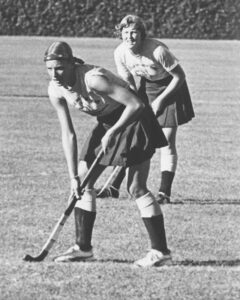
Ironically, men involved in Cal Athletics, including boosters, administrators, and journalists, were some of Lilly’s biggest supporters as well as her biggest adversaries. Lilly describes an environment of contentiousness over the scheduling of limited athletics facilities between the four athletics departments: Physical Education, Recreational Sports, Men’s Athletics, and Women’s Athletics. She believed that sometimes the tensions were understandable given Cal’s limited number of facilities; but, at other times, the competition between departments felt totally contrived.
A lack of cooperation meant that Lilly’s women’s programs had to deal with last-minute facilities scheduling changes, as well as explicit efforts to block cooperation between the men’s and women’s athletics departments. Lilly had to decide whether to resist those efforts or focus her energies elsewhere. Oftentimes she wavered between the two:
I think that cooperation is the main thing. I think you can really, really help each other… One of the things that I did do here was that I had all of my coaches and athletes give gold cards to all of their counterparts. I think the men’s gymnastics team should be able to watch the women’s gymnastics team free of charge, so I did that. And then [Vice Chancellor for student affairs] Bob Kerley talked to me and said that—here we go again—that [Men’s Athletic Director] Dave Maggard was upset with it, that we were trying to get tickets for the men’s events, and he went on and on about what I was trying to do, so I said to Bob, “All right. We won’t do it.” So then I came back the next year and I said, “I am not comfortable with this. I don’t like the fact that we can’t cooperate and have the men come to the women’s events. I don’t even care if he just thinks we’re trying to increase our attendance. The point is that you’re working together.” Because again, I came from that background of when the swimmers were on the same buses and that sort of thing, in high school. So it’s really hard for me to just think that everybody is so territorial. So Bob [Kerley] said, “If you feel that strongly about it, just go ahead and do it and we’ll just put up with the consequences.” So I had my coaches do it the next year.
Some instances of antagonism seemed inexplicable to Lilly who, as a volleyball and basketball coach at the University of Nevada prior to her tenure at Cal, learned the value of cooperation between the men’s and women’s coaches.
I said, “Well, let’s try to have a Christmas party and get to know some of the male staff. So all my coaches invited all the men coaches to come to a Christmas party, and the Alumni House gave it to us for free. This is where I say I had a lot of cooperation—they gave us the room; we didn’t have to pay for it. And nobody showed up except for the men’s football staff. And Roger Theder said nobody’s going to tell him what party he could and couldn’t attend. And another coach had told me that Maggard threatened that if anybody came to this party they’d be fired. So here’s all the women’s staff and eight football coaches. And we had a good time, you know. But that was just it; it was one of those situations again that just didn’t make any sense for me. The tennis coaches should know each other, and all this sort of thing.
Although Lilly found some adversaries in other sports-related departments, she found supporters of Cal Athletics elsewhere. In her oral history, Lilly says that “the strongest supporters that we’ve had and the people that have helped us the most along the way have been men.”
Doug Gray, a reporter at The Daily Californian, took an interest in Cal Women’s Athletics and began covering Lilly’s programs. Members of Cal’s athletics boosters, the Bear Boosters, slowly warmed up to the idea of supporting Lilly’s department. But many were reluctant to openly support the Department, which made for some odd interactions with male boosters. As Lilly recalled:
When I used to give my speeches it was really kind of funny, because I said I felt like a hooker or something, because the guys would never just come out and hand me money. They always—as I was saying goodbye they would either slip it in my pocket or they would shake my hand and leave the money in my hand. Or do all these little indirect things so that nobody knew that they were giving us any money!
And so when we were doing that, this one guy said, “If you ever let anyone, anyone at any time, ever know that I gave to the women’s program, I will never give you another cent.” He’d given us a whole twenty-five dollars; you’d think he’d given us millions. Anyway, but then later on after it became the big deal to give—and one of the awards that he got—and he said he was one of the first members of the Bear Boosters contributing and helping Women’s Athletics. Because at that point in time it was acceptable to do it. So he went from one extreme to the other. So we laughed when we saw that on his resume.
Muddling through
Fundraising picked up eventually, but for quite some time Lilly had to make do with limited resources. Lilly recalls diving into dumpsters and upcycling waste into equipment that the women’s programs needed for competitions. Among other things, Lilly made tennis poles to hold up the nets for doubles, poles for cross-country finish lines and a rolling cart for outdoor sports out of scrap wood she salvaged.
The women’s head coaches, who were already underpaid at less than $5,000 a year, lacked adequate office space and had access to just three phones between the twelve of them. So Lilly, with help from administration, created an office space:
And what we did then was—and then Bob Kerley made arrangements for me to go down to the surplus area and to get some desks, because we didn’t even have desks for the coaches. So what we did was we put two desks together with one of the bathroom partitions for a wall. And then we just went down that whole great big area that we had and made little cubbyholes for the coaches. These things weren’t even attached; they were just between two desks. And then we cut out a hole at one end of them and made a little flap so you could put a telephone on it. And then the telephone was passed back and forth from one coach to the other for the various sports, so that there was a little platform for them to be able to put the telephone, but we only had three telephones. There were twelve sports.
At various points throughout her oral history, Lilly points to instances in which she might have made a very different decision but chose not to. For example, in the early 1980s, recruiting became even more competitive. Some recruits began to ask for free cars in exchange for their commitment, a request that she suspected other schools fulfilled. Lilly says she refused to give in, and her women’s programs lost out on excellent recruits as a result.
Similarly, when administration disallowed some women’s coaches from working under multiple departments at the same time, Lilly considered challenging the decision but ultimately chose not to.
They weren’t going to let the women coaches—for basketball, and Joan Parker for tennis—be able to be in our department and Physical Education at the same time. And yet at the same time, the wrestling, water polo, and tennis coaches and—a lot of them were coaching in the men’s sports and teaching— but I would have made a major men’s/women’s issue right at the very, very beginning, and I knew I had to get things established better than making that particular fight. So I didn’t fight with that particular issue, but I did go to Bob Kerley and say, “Since everything is in such turmoil right now, could we have a one-year extension on that particular issue?” So Joan Parker was able to coach tennis the first year, and Barbara Iten was able to coach basketball the first year that I was there, but with the idea that they would not be able to coach the next year because I would accept whatever their previous ruling was, because like I said, I wasn’t going to make that a major issue. I really had to tiptoe lightly, when I made an issue out of something and when I didn’t, and what things I let slip and which ones I didn’t, and where I took a really, really strong stand. And I had to try to think about what was best for women’s sports and then what was best for Cal.
Separate success
Even while Lilly had to grapple with some of the pitfalls of having separate mens and women’s athletic departments, she expresses discontent at the trend in collegiate athletics towards combining the departments. Cal Women’s Athletics merged with the men’s athletics department in 1992. Lilly points out that several women’s programs experienced a sudden downturn after the merger, dropping from national title contention year after year to irrelevance for quite some time. With separate leadership, Lilly argues, female athletes and women’s coaches are more well-represented. A single athletic director can’t represent everyone well.
I think a lot—again it has to do with leadership, and feeling that—you conveyed a lot of this to the recruits, that this was—you were in charge and this was what was going to happen, and so forth. And they could come and see [that a] woman is director at this time. I think it’s much more difficult, again, if you’ve got twenty sports, to pay the same amount of attention as you could get when you’ve got two leaders as opposed to one trying to do a bigger job… When they’re combined, I feel that anyone who would be in charge of a combined program would have the same difficulties. In other words, you are expected, for men’s football and basketball, no matter what, to be there. And yet, at the same time, you’ve got to try to balance all these other sports. But if you had—let’s say both [the men’s and women’s basketball] teams make it to the Sweet Sixteen, and you’re the athletic director, you know where you’re going to be.
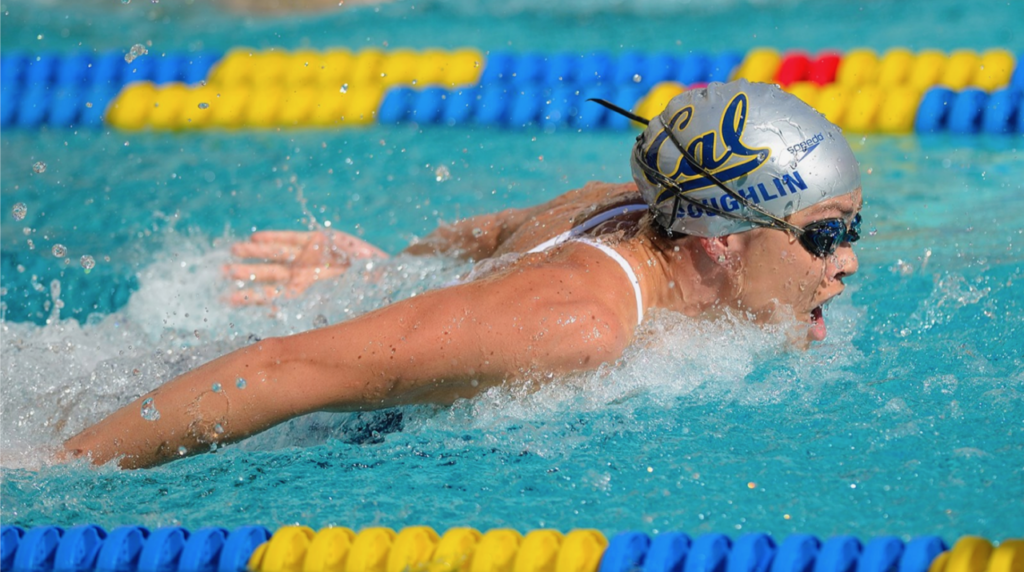
Lilly’s legacy was and is still visible in the form of elite Cal female student athletes and alumni. Natalie Coughlin, for example, swam for Cal in the early 2000s. She’s now a 12-time Olympic medalist, including three gold medals. Photo: UC Berkeley
With the merging of the men’s and women’s departments, Cal Athletics relieved Lilly of her duties. But 30 years later, Lilly’s legacy lives on in the form of elite women’s athletics programs. For progress to be made, Lilly hoped to predict the future and act quickly in order to stay one step ahead of other institutions. She managed the growth of coaching staff personnel and salaries with both budget constraints and trends in college athletics in mind, accelerating Cal Women’s Athletics’ rise to prominence.
There was a progression, but one of my favorite sayings which I think I made up myself is, “You don’t try to keep up with Joneses. You figure out where the Joneses are going to go and get there before they do.” And that was my philosophy. And so I always tried to figure out where sports were going, where were salaries going, where was the pressure going to be, and so forth, and then try to get all that into one big picture and then do what I could do within the money that we had.
More than 21 of the 45 oral histories in the Oral History Center’s Athletics at UC Berkeley project mention Lilly and her work.
Find this interview and all our oral histories from the search feature on our home page. You can search by name, keyword, and several other criteria.
William Cooke recently graduated from UC Berkeley with a major in political science and a minor in history. In addition to working as a student editor for the Oral History Center, he was a reporter in the Sports department at UC Berkeley’s independent student newspaper, The Daily Californian.
Related Resources from The Bancroft Library
The Bancroft Library has hundreds of materials related to athletics in California and beyond. Here are just a few.
Lilly’s oral history is part of the Oral History Center’s project, Oral Histories on the Management of Intercollegiate Athletics at UC Berkeley: 1960-2014. This project comprises forty-five published interviews, conducted by John Cummins. Cummins was the Associate Chancellor and Chief of Staff who worked under UC Berkeley Chancellors Heyman, Tien, Berdahl, and Birgeneau from 1984 through 2008. Intercollegiate Athletics reported to Cummins from 2004 to 2006. Among the interviewees are longtime Chair of the Physical Education Department Roberta Park and former Assistant and Associate Athletic Director in the Women’s Athletic Department Joan Parker.
Articles based on this oral history project
William Cooke, “Title IX in Practice: How Title IX Affected Women’s Athletics at UC Berkeley and Beyond”
William Cooke, “Heavy hitters: the modern era of athletics management at UC Berkeley”
William Cooke: Luella Lilly: Cal’s first and only Director of Women’s Athletics
Other resources from The Bancroft Library
Cal women athletes hall of fame. Inauguration ceremony… May 24, 1978. Bancroft Library/University Archives. UC Archives ; 308m.p415.hf.1978
Cal sports 80’s. A program to improve the environment for Intercollegiate athletics at the University of California, Berkeley. Bancroft Library/University Archives. UC Archives ; 308m.p41.csp.1980
A celebration of excellence : 25 years of Cal women’s athletics. Bancroft Library/University Archives. UC Archives Folio ; 308m.p415.c.2001
About the Oral History Center
The UC Berkeley Oral History Center preserves voices of people from all walks of life, with varying political perspectives, national origins, and ethnic backgrounds. You can find all our oral histories from the search feature on our home page. Search by name, keyword, and several other criteria. We are committed to open access and our oral histories and interpretive materials are available online at no cost to scholars and the public.
Sign up for our monthly newsletter featuring think pieces, new releases, podcasts, Q&As, and everything oral history. Access the most recent articles from our home page or go straight to our blog home.
Oral History Project Wins Autry Public History Prize
The UC Berkeley Oral History Center (OHC) is thrilled to announce that OHC historian Todd Holmes and project partner Emi Kuboyama from Stanford University have won the 2023 Autry Public History Prize for their digital project, Redress: An Oral History. The award is given by the Western History Association for the best project in public history. Released to the public in 2022, the project documents the history of Japanese American Redress through oral histories and a documentary film, which are featured with related historical resources on a dedicated educational website.
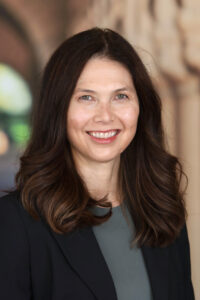
Holmes and Kuboyama began the project in 2018 with the initial goal of documenting the history of the Office of Redress Administration (ORA), the little-known agency charged with administering redress by the Civil Liberties Act of 1988. Emi Kuboyama, the principal creator of the project, had a direct link to the agency and its work. As a native of Hawaii, she was no stranger to the history of Japanese American incarceration or the impact that dark period still held in Japanese American communities. She also began her legal career with the agency in 1994, an experience that had a profound impact on her personally and professionally.
In 2017, Kuboyama attended the OHC’s Advanced Oral History Institute to explore how oral history could help document the historic redress program and the work of the ORA. There she met OHC historian Todd Holmes and the two agreed to partner on the project. With the support of a Japanese American Confinement Sites grant from the National Parks Service, they conducted over a dozen interviews with former ORA staff, as well as community leaders affiliated with the program. The recordings and transcripts of those interviews are now housed at the Densho Digital Repository. Upon the completion of the oral history interviews, Holmes and Kuboyama recognized the need to put the history of the ORA into conversation with the experience of the Japanese American community in its forty-six-year journey from internment to redress. With the generous support of the Henri and Tomoye Takahashi Foundation, they enlisted the help of filmmaker Jon Ayon. The collaboration resulted in the film, Redress, which offers the first in-depth look at the history of Japanese American redress as told by the community members who took part in the program, and the government professionals who administered it.
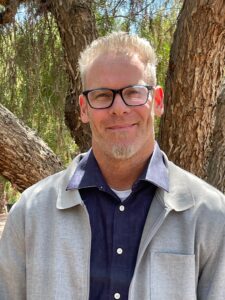
The last part of this digital project was to create a website that would not only serve as a home for the oral histories and film, but also an educational space for students and the public to learn more about the history of redress. Created by Todd Holmes and Heidi Holmes, the website features two historical pages that supplement the film and oral histories, as well as a resources page that points visitors to related historical material such as books, films, and oral history collections. Since the project’s release in fall 2022, the website has received over 43,000 visitors.
The prize was awarded to Holmes and Kuboyama in October 2023 at the annual Western History Association Conference. In the awards program, the Autry Committee praised the Redress project as “an excellent model of professional public history practice that documents a moment in Western American History that has particular significance for today’s conversations about reparations within other marginalized groups.” The committee also applauded how the project “showcases the power of the medium of oral history.”
The Oral History Center congratulates Todd Holmes, Emi Kuboyama, and their partners on an outstanding project and contribution. For more on the history of Japanese American Redress, visit the project website. And to learn more about the Japanese American experience and the legacy of WWII, see the new oral histories of the OHC’s Japanese American Intergenerational Narratives project, which are featured in the newest season of The Berkeley Remix podcast.
Resources
Redress: An Oral History website
Oral History Center’s Japanese American Intergenerational Narratives Oral History Project
The Berkeley Remix podcast: Season 8: “‘From Generation to Generation’: The Legacy of Japanese American Incarceration”
A spearhead for the barrio: the educational activism of Ernesto Galarza
From the Archives
By Adam Hagen
UC Berkeley’s Oral History Center houses a number of oral histories that center the lives of Mexican American activists. One such history, Burning Light: Action and Organizing in the Mexican Community in California, contains the recorded speeches and interviews of Ernesto Galarza from the late 1950s through the early 1980s, and provides a glimpse into the life of a man whose commitment to the Mexican American agricultural workers of California never wavered, even when he found himself a continent apart from them.
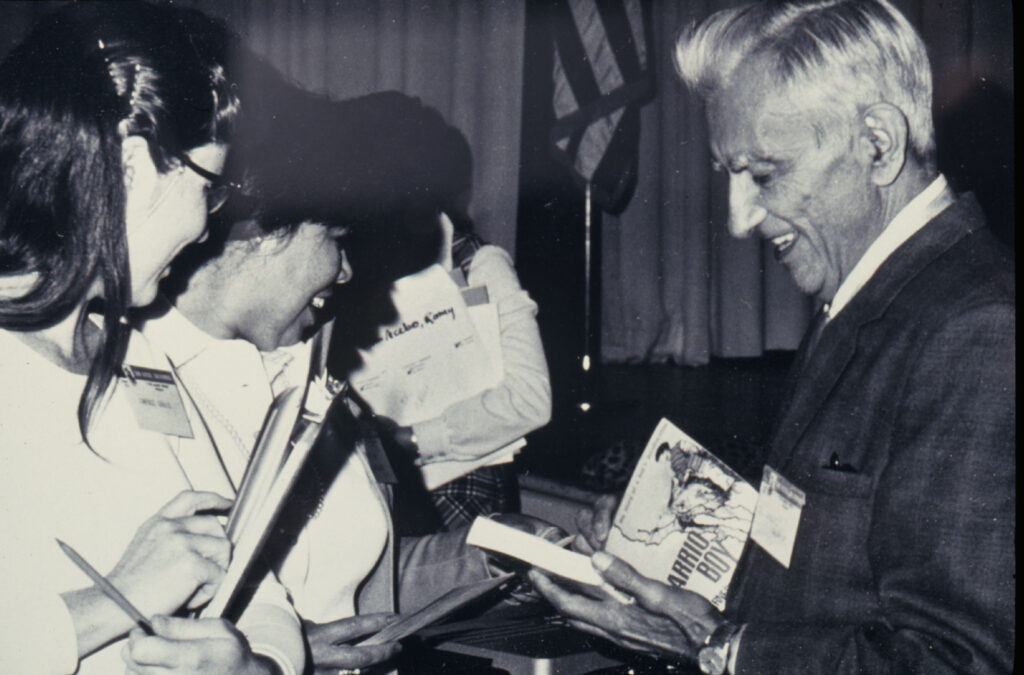
Galarza’s words, which he imbues with a certain dry poetry, recount a life of extraordinary experience and achievement: Galarza worked as an organizer with the United Farm Workers of America, where he was instrumental in bringing the bracero program to an end; as an educator at the elementary and collegiate levels; and for a time as the chairman of the development of bilingual educational material for the National Committee of Classroom Teachers. He also worked as a consultant for several organizations and institutions, including the government of Bolivia. A recurring theme in Galarza’s oral history, and the subject of this profile, is his efforts on behalf of bilingual education and Spanish literacy advancement in the Mexican American community.
Galarza was born in the village of Jalcocotán in the Mexican state of Nayarit in 1905. But fleeing the tumult of Francisco Madero’s revolution, he and his family came to Sacramento in 1911, when the Central Valley’s patchwork of farm property was not yet its present expanse and its limits did not so easily elude the eye. There, enveloped in a community of agricultural laborers in the Sacramento barrio, a young Galarza would see firsthand the struggles of Mexican Americans and braceros as they tried to navigate the foreign land in which they now found themselves. And, as his family was of modest means—exacerbated by his mother’s death in 1917—he too joined in this work from an early age. One of the recorded talks compiled in the oral history contains a poignant allusion to his communities’ challenges in adapting to life in the United States, and, as it deals with the matter of English language acquisition, reveals the seeds of his future work. In the talk, Galarza recalls that he “became a leader in the Mexican community at the age of eight for the simple reason that I knew perhaps two dozen words of English.”
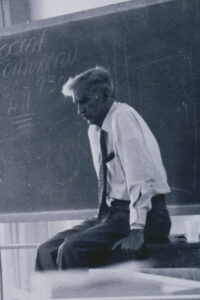
English proficiency, however, was only one of a number of skills that Galarza exhibited in his youth. His academic prowess was so apparent that Sacramento High School teacher Ralph Everett approached him personally and asked that he reconsider his plan to work at the Sacramento Libby, McNeill & Libby cannery after graduation, insisting that he attend college instead. Everett even went to great lengths to help Galarza gain admission to Occidental College in Los Angeles, the institution he would graduate from in 1927. After Occidental, Galarza would go on to earn a master’s degree in history from Stanford University in 1929 and a doctorate in sociology from Columbia University in 1944.
Galarza’s recollection of his time at these institutions reveals how rare it was for a “Mexicano” to have the opportunity to obtain a higher education in the early twentieth century. He had this to say at a talk for Chicano studies students at UC Berkeley in 1977:
The Chicano students that I knew in the thirties at Columbia and elsewhere were very few in number. At Columbia University I didn’t know another graduate student in the department of history or political science or public law, which is where I did my work. Neither were there many of us in the undergraduate institutions in Southern California where I went to college at Occidental. I remember, I think it was in 1925, out of sheer curiosity I inquired among my friends at UCLA, USC, Pomona, Whittier and all of that cluster of colleges in the south, and I could only identify six of us in all of those places. Of course, possibly that wasn’t a good count because even then there were some Chicanos who had already given up their identity. They had become anything but Mexicans. In those days, we didn’t talk about Chicanos. You were either a Mexicano or you were not.
His skills in English and consequent academic achievements were a relative anomaly among the bracero and Mexican American communities due to there being a dearth of bilingual and English language education resources at the time of his youth. According to Galarza, not until the latter half of the twentieth century did the federal government take the concept of bilingual education and English as a second language (ESL) education seriously and fund it in any substantial fashion. And, as he notes in his oral history, once funding did increase there remained a system that overlooked the intricacies of bilingual education; advisory committees in Washington attempted to regulate the bilingual and ESL instruction from afar, and their distance resulted in curriculum that was incongruent with students’ needs.
Concerned about this oversight, Galarza explains that he and other instructors working in bilingual education were actively challenging the Department of Health, Education and Welfare and the Office of Bilingual Education in the 1970s, and had begun to see success. As he says in the oral history, he felt their work “has been so effective, even modest as it is, that it has created waves that have become very ominous to them.”
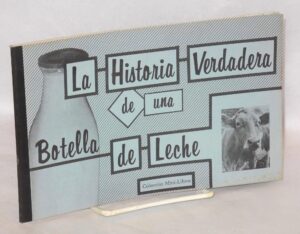
And beyond his pushing for better, more personalized bilingual education curriculum on an institutional level, Galarza—believing that Spanish literacy had to precede English instruction—took it upon himself to craft and publish what he called “Mini-Libros,” easy-to-read Spanish texts that he designed for use in the classroom and hoped would engage young readers. So as to make students as comfortable as possible, the Mini-Libros even contained vocabulary specific to Mexico and the working-class immigrants coming to the United States at the time.
These actions were especially timely because Mexican immigration into the US was greatly increasing in the 1960s and ’70s, a topic thoroughly discussed in the interview. Galarza recognized the wealth of challenges—from housing to employment to education—that came with incorporating such a massive population into the fabric of American society, and identified the issues of literacy and English proficiency as those he was most eager to help resolve.
Each summer in his undergraduate years Galarzo would return to Sacramento to do what he called “bread and butter work” in the farms and the cannery. Later, when he left California to study at Columbia and the path home was no longer so easily negotiated, his community’s want of literacy became a major concern, in part his due to its personal impact:
I began to be disturbed by the lack of news from home. My family and my friends back in Sacramento were not writers. They didn’t know, many of them, how to write…When I realized after my third or fourth year back in the East that this was happening to me, I became very disturbed. And while we stayed in the East another six years, that feeling never left me that what was happening back in California in all the towns that I knew and where I had worked, I was not keeping abreast of.
Galarza believed that the Mexican immigrant children coming into the school system in the mid-twentieth century had to be brought into the fold of American life, to be “acculturated,” in his words, so as to avoid the fate of his own family and community. And such acculturation could not begin with a hard-and-fast imposition of English instruction, something he believed would only further alienate the newly arrived immigrants, accelerate the creation of insular communities, and complicate their path to prosperity in the US. He viewed bilingual education as the obvious answer to this challenge. It would help a child, as he noted in his oral history, to “recognize—to get into—and become familiar with this strange environment into which he’s been dropped.”
Galarza’s oral history is an invaluable glimpse into the subtle divides of his time: for each acknowledgement of how badly the “American hosts” have treated Mexican Americans, he has another remark on the myopia of Mexican American activists due to their protests against acculturation—something he believed was “largely for the purposes of propaganda.” And beyond these commentaries, he proves to be equally invaluable as a representation of a steadfast activism that lacks glamour and prefers actions to words. Galarza identified the challenges of his time and repeatedly asked the central question: what to do about it?
Find this interview and all our oral histories from the search feature on our home page. You can search by name, keyword, and several other criteria.
Adam Hagen recently graduated UC Berkeley with majors in Spanish linguistics and history. Adam worked as a student editor for the Oral History Center and was also a member of the editing staff of Clio’s Scroll, the Berkeley Undergraduate History Journal.
Related Resources from The Bancroft Library
The Bancroft Library has more than thirty holdings by Ernesto Galarza, including poems, books, reports, pamphlets, conference proceedings, and audio of talks and panel discussions. From the UC Library Search, go to “Advanced Search,” select “UC Berkeley special collections and archives,” and in the search field, enter Ernesto Galarza.
The Chicana/o Studies Oral History Project provides a rare, firsthand look at the development of the field of Chicana/o studies over the last fifty years, as well as unique insight into the lives and careers of the pioneering scholars who shaped it.
The Oral History Center digital collection contains additional oral histories of Mexican American activists, such as Hope Mendoza Schechter and Herman E. Gallegos. More can be found by searching “Mexican American community” or “Mexican American activism” on the Oral History Center home page.
Ernesto Galarza’s oral history is part of the Oral History Center’s Advocacy and Philanthropy—Individual Interviews collection. Read more about the collection in the article by Lauren Sheehan-Clark, “Helping Hands: A Guide to the Oral History Center’s Advocacy and Philanthropy Individual Interviews.”
About the Oral History Center
The Oral History Center of The Bancroft Library preserves voices of people from all walks of life, with varying perspectives, experiences, pursuits, and backgrounds. We are committed to open access and our oral histories and interpretive materials are available online at no cost to scholars and the public. You can find our oral histories from the search feature on our home page. Search by name, keyword, and several other criteria. Sign up for our monthly newsletter featuring think pieces, new releases, podcasts, Q&As, and everything oral history. Access the most recent articles from our home page or go straight to our blog home.
Connection, Insight, Inspiration, Truth: Berkeley undergraduates reflect on oral history
“I was just one of thousands of people over the years who have done the little things necessary to create and to pass on personal narratives of the past.” —Mollie Appel-Turner
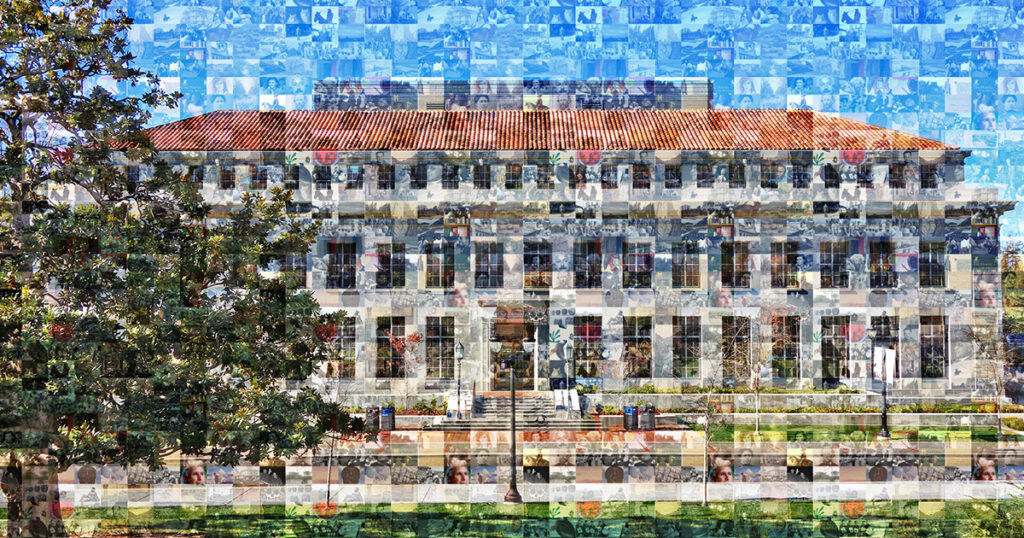
Introduction: Thoughts on the Production of Oral History and Its Importance
by Serena Ingalls, class of 2023
Like many of my student co-workers at the Oral History Center (OHC), I have recently graduated from UC Berkeley. Graduation from college is a major milestone, and I find myself looking back at all of my different experiences at Cal: classes, clubs, the pandemic, and my job as a student editor and researcher at the Oral History Center. My job in oral history in particular is a point of contemplation, as I’ve spent many hours in this role and it’s a unique experience that only a handful of other students can relate to. I find myself wondering, how has this job impacted me and my view of the world? How has my work in this role contributed to the field of history?
Before closing the UC Berkeley chapter in our lives and moving on to other post-grad interests, we as the student editors took the time to reflect upon our work at the Oral History Center and what it means to us. We hope that you’ll enjoy stepping into our world as student editors in oral history, just as we have enjoyed the experience of getting to know the many fascinating individuals in our oral history archive.
Editor’s note: Our team’s student editors serve critical functions in our oral history production, analyzing entire transcripts to write discursive tables of contents, entering interviewee comments, editing front matter, writing abstracts, and more. They do the work of professional editors and we would not be able to keep up our pace of interviews without them.
Mollie Appel-Turner: Oral History and Connection
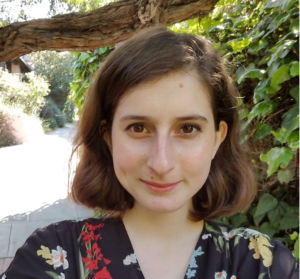
Working for the Oral History Center of The Bancroft Library while pursuing a history degree was both deeply rewarding and extremely unfamiliar. My area of interest when it comes to history has always been western medieval Europe. While there are plenty of sources from the era where people recount their life experiences, I always had an awareness of the massive separation—temporal, cultural, and physical—between myself and the speaker. At the Oral History Center, I was keenly aware that the work that I was doing on oral histories was with the ultimate goal of preserving knowledge for future generations. But for the time being, that gulf I was used to, which to me practically defined the work I did as history, was simply not present. In my time outside of work, I also spent a fair chunk of time reading people’s personal accounts. While these accounts differed in many ways from the oral histories that I worked on, as time passed, I came to see these different kinds of personal accounts as reflections of one another. I would frequently stop in the middle of my shift, cursor blinking next to a spelling error, and think about how I was just one of thousands of people over the years who have done the little things necessary to create and to pass on personal narratives of the past. The immediacy, and modernity of the accounts that I worked on at the Oral History Center, rather than widening the distance I felt between me and the medieval people I studied, made me feel closer to them in a way that I did not expect.
Mollie Appel-Turner joined the UC Berkeley Oral History Center as a student editor in fall 2021. She recently graduated with a degree in history with a concentration in medieval history.
Shannon White: Oral History and Inspiration
In my time at the Oral History Center, I have worked on and witnessed the publication of interviews from an innumerable variety of narrators, including artists, writers, curators, academics, conservationists, and otherwise “ordinary” people with extraordinary stories to tell. I recall the first oral history I worked on upon joining the Center: Thomas Gaehtgens, former director of the Getty Research Institute, whose interview was not only incredibly detailed but also quite interesting to read. More recently, I have helped edit interviews from the Chicana/o Studies Oral History Project, the Japanese American Intergenerational Narratives Oral History Project, and the California State Archives State Government Oral History Program.
As a member of the OHC’s editorial team, most of my work is behind the scenes and prior to publication. I see these interviews at almost every stage in production. By the time an oral history transcript is finalized, I have generally read through it in its entirety several times and am quite familiar with the contents; as such, I interact with oral history at multiple levels. This experience has ultimately helped form and maintain my view of oral history as an inherently dynamic, interactive record—a form of living history.
The final oral history is a labor of many people to produce, with several rounds of edits and review that heavily draw from the narrator’s own input, and as such possesses a strong sense of the narrator’s personal style: how they speak, what they consider important or even essential for understanding their stories, their sense of humor, and what elements of the initial oral interview they would prefer to keep private.
The result is a distinctively humanizing portrayal of the narrator that arises from the nature of oral history as a lightly edited, audio-based interview format. The reliance on the “oral” aspect of oral history means that, bar serious editing, the published transcripts of interviews from the OHC tend to preserve a great deal of the tone of the original audio recording, including quirks of speech unique to each narrator. My personal favorite detail is always the bracketed notes included by the transcriber to indicate when someone is laughing, a phenomenon that often accompanies the conversation between interviewer and narrator and, in my opinion, highlights the deeply personal nature of these interviews.
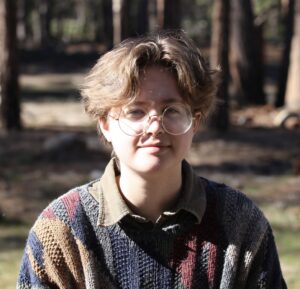
By sheer virtue of the volume of in-progress oral histories I interact with, I find that in time they become almost a part of you—there are so many narrators whose words and stories I remember, and whose work I have actively sought out after encountering their oral histories. For example, I became interested in Bay Area arts institutions after reading the interview of a San Francisco Opera board member; my own undergraduate research has been informed in no small part by border theory, a concept I was first introduced to by the narrators of the Chicana/o Studies Oral History Project; and my work on the oral histories of California politicians has contributed to my awareness of the history of the state’s politics. Oral history is intimate and alive, and its existence has the unique ability to inform and inspire those who engage with it.
Shannon White is a recent UC Berkeley graduate in the Department of Ancient Greek and Roman Studies. They were an undergraduate research apprentice in the Nemea Center under Dr. Kim Shelton and a member of the editing staff for the Berkeley Undergraduate Journal of Classics. Shannon worked as an editorial assistant for the Oral History Center.
Serena Ingalls: Oral History and Insight
Before working at the Oral History Center as a student editorial and research assistant, my interactions with oral history were limited. As a history major, it was a topic occasionally mentioned in my classes at Cal. I could understand the value in oral history as a way of filling in gaps in the historical record and giving a voice to those who were excluded from the written record. After I began my work with the OHC, however, I gained a new appreciation for oral history. This change in perspective came after seeing firsthand the immense effort that goes into producing oral histories to be shared with the public, and from reading the oral histories in our archive.
At the Oral History Center, I’ve worked in two roles. One of my roles is as a research assistant. In order to promote our archive and share our interviews with the public, we post on social media about relevant historical anniversaries (25th, 50th, 75th, 100th). I research these anniversaries and then search the archive to see if we have content that references these historical events. It’s surprising how many specific events are mentioned by interviewees, so I never discount an event without checking first with the archive. If there is one event that is very historically significant and has several interviews that reference it, sometimes I’ll write an article on the subject for the OHC. My other role is as an editorial assistant. Editorial assistants are part of the process of readying an oral history for publication. Student editorial assistants have a range of responsibilities during the editorial process which include inputting corrections from narrators, writing the table of contents, and more. Editing the oral history is a collaborative process, and it can take months or even years before an oral history is fully ready for publication. Once an oral history is completed and shared with the public, all who have worked on a particular oral history know the narrator inside and out.
The OHC has an enormous archive of interviews with narrators who have incredible insight on the history of California and beyond. Their voices provide knowledge, but more critically, they add life to these historical periods. The interviews are at times surprising, heartbreaking, and even funny, and no two interviewees have the same story. Each interview is a unique combination of the mundane and the extraordinary, just like the life of any person.
“Each interview is a unique combination of the mundane and the extraordinary, just like the life of any person.” —Serena Ingalls
Serena Ingalls recently graduated UC Berkeley with majors in history and French. She is an editorial and research assistant for the Oral History Center. Serena came up with the idea for an article about what it’s like to work on oral histories when she worked on an article about the seventy-fifth anniversary of the tape recorder.
William Cooke: Oral History and Truth
A few short months ago, I graduated from UC Berkeley. I have completed 12 political science courses; written dozens of sports articles for Berkeley’s independent student newspaper, The Daily Californian; struggled my way through one too many required science classes; and penned more than a few essays en route to a minor in history.
As a journalist and student, determining and advancing truth was at the heart of everything I did. For example, in order to make a sound political science argument about the role of agency in a democracy, I could not reinvent what Harriet Jacobs wrote in her autobiography, Incidents in the Life of a Slave Girl. Desiderius Erasmus had something specific to say about tyranny. What was it, exactly? Did Cal’s football team run or pass the ball more often on third down? If the United States federal government really did assume a different position towards organized labor after World War II, what evidence supports that claim?
The answers to my own questions, or the questions my professors asked of me, had to be completely truthful. I certainly couldn’t say that I didn’t have an answer to an essay prompt.
Oral history is a little bit different. When I first began working here last year, I couldn’t help but be skeptical. An interviewee in her eighties cannot with absolute accuracy remember her childhood years during the Great Depression, or her immediate reaction to the assassination of President Kennedy. Memory fails people all the time. A story might be true on the whole, I thought to myself, but the details might not. And what use was the answer “I don’t know?” That might be the truth, but what good is an oral history in which there are gaps?
In short, how could a researcher possibly find use in an incomplete, possibly inaccurate story told by someone fifty years after the fact?
Of course, these questions are not on my mind as I write a table of contents or fix formatting issues on a transcript. My work can be tedious at times. As someone whose mind likes to stay busy, I don’t mind. But every now and then I will stop and think critically about what I’m reading and how it relates to my role as a student, journalist, and assistant at the Oral History Center; namely, promoting truth.
I soon came to terms with the fact that oral histories cannot be totally accurate and that in an important way they are true. While the historian attempts to explain how people in the past saw themselves, their situation or others in very broad terms, the oral history provides insight into how a creator of history currently thinks of her past self, a valuable perspective for social scientists of all stripes. An interviewee might have felt more anxious than nervous at a certain moment in history, but how he remembers the past is also an important part of history. What good is there in knowing the true happenings if we do not know how the living, breathing makers of history think about what happened?
And for that reason, I have come to realize that oral history isn’t impure, or less true. I do still read the oral histories I work on with a wary eye. But I don’t worry about their truthfulness like I first did back in the spring of 2022. Instead, each time I complete my portion of a project, I feel a sense of gratification for having helped keep history alive. Because true history is not a fixed thing. It lives in the minds of everyone who has experienced it.
William Cooke recently graduated UC Berkeley with a major in political science and minor in history. In addition to working as a student editor for the Oral History Center, he is a reporter in the Sports department at UC Berkeley’s independent student newspaper, The Daily Californian.
Related Works
Serena Ingalls, Saving the Spoken Word: Audio Recording Devices in Oral History
Mollie Appel-Turner, Shirley Chisholm, Women Political Leaders, and the Oral History Center collection
William Cooke, Title IX in Practice: How Title IX Affected Women’s Athletics at UC Berkeley and Beyond and Heavy hitters: the modern era of athletics management at UC Berkeley
Shannon White, “I take this obligation freely:” Recalling UC Berkeley’s loyalty oath controversy
Jill Schlessinger, editor, A peaceful silence: Berkeley undergrads reflect on remote employment during the pandemic
About the Oral History Center
The Oral History Center of The Bancroft Library preserves voices of people from all walks of life, with varying perspectives, experiences, pursuits, and backgrounds. We are committed to open access and our oral histories and interpretive materials are available online at no cost to scholars and the public. You can find our oral histories from the search feature on our home page. Search by name, keyword, and several other criteria. Sign up for our monthly newsletter featuring think pieces, new releases, podcasts, Q&As, and everything oral history. Access the most recent articles from our home page or go straight to our blog home.
Saving the Spoken Word: Audio Recording Devices in Oral History
By Serena Ingalls
Seventy-five years ago, in April 1948, Ampex began to sell the first audio tape recorder commercially to the public, the Ampex Model 200. This product, a rather large and bulky unit, was first marketed towards local and regional radio broadcasters and promised to be well worth the cost due to its utility. As time went on, audio recording technology only became less expensive, smaller, and more widely available, notably with the creation of the cassette tape by Philips. The invention of audio tape recorders made a huge mark on the world, and it impacted the daily lives of many, particularly those who spent much of their time interviewing and taking notes. In the archive of the UC Berkeley Oral History Center, there are many casual mentions of tape recorders that reveal the importance of these devices, and how people thought about and experienced the recording of interviews.
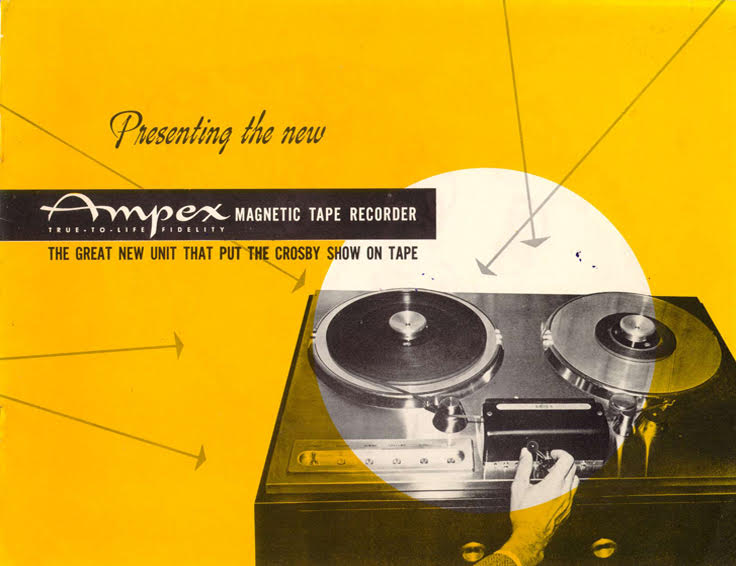
Sports journalist and UC Berkeley alum Glenn Dickey began his career before tape recorders were generally used in the field, so he became very skilled at taking shorthand notes. His ability to take notes and remember conversations verbatim was so remarkable that others doubted that he didn’t use a tape recorder. In his oral history, Dickey talks about tape recorders and reflects on a personal experience. “One time when Garry St. Jean was an assistant coach for Don Nelson, he had a bet with Don Nelson that I have a tape recorder hidden,” explained Dickey. “Because he’d be there when I was talking to Nelson, and he knew that what I was writing in the column was what Nelson said—he says, ‘He can’t remember all that.’”
“It is easy to say now that I can narrate the story of my life on a tape recorder before writing these memoirs down, but for millennia it was impossible and everything hinged upon the spoken word, and all traditions and all the knowledge gradually accumulated by humanity depended upon this knowledge.” — Alexander Paul Albov
Others took full advantage of the tape recorder as a memory aid. Jo DeJean, the personal assistant to Gary Rogers at the Dreyer’s Grand Ice Cream Company, was one such person. She recalls in her oral history that “on my ride home I would talk into a tape recorder about things that I needed to do. We didn’t have cell phones back then. Because I had all these things swimming around in my head, so I needed to record them. So that’s what I did.” This strategy is now employed by many through the means of “voice memo” features on smartphones.
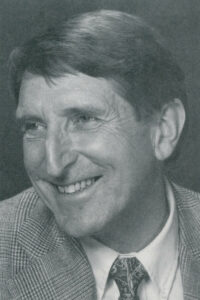
When tape recorders became inexpensive and easily accessible, they were used consistently by interviewers. Tape recorders were incredibly useful tools for longer interviews. Sometimes during the oral histories conducted by the Oral History Center, the methodology of the interviewers makes its way onto the record through the mention of tape recorders and other tools.
One interviewee, George W. Waters, former editor of Pacific Horticulture, became curious about the tape while his interview was being conducted. While chatting about interviewing techniques, Waters asked about what would become of the tape after the interview was done, and the interviewer, Suzanne Riess, replied “You can ask that the tape be destroyed, if you really wish.” This remark seemed to surprise Waters, and he replied, “Well, I appreciate the fact that somebody else has accepted the job of transcribing it. No, there are advantages and disadvantages [to using the tape recorder], and well, I wouldn’t have missed this for the world. It’s so rare, isn’t it, that one gets an opportunity to talk about himself to someone who’s actually interested in staying?”
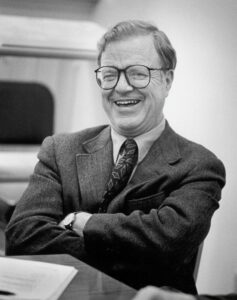
Sometimes, however, the presence of a tape recorder could create an awkward barrier between the interviewer and interviewee. Robert D. Harlan, professor of the UC Berkeley School of Librarianship (later the UC Berkeley School of Information), who also conducted oral history interviews for the Oral History Center (then the Regional Oral History Office), was asked about his experience in his own oral history. Harlan reflects that “Having been both the interviewer and the interviewee, it’s easier to be the interviewee, I think. It’s more reactive. You know, I don’t have to change the tapes and that sort of thing. [laughter]” At the same time, he recalls that one of his interviewees had difficulty in opening up because “he found the process intimidating, sticking this thing [tape recorder] in front of him, so I had to work at it. And well, you’re certainly aware of this. It can be a problem. I wish he’d been a little more forthcoming.”
Even if they sometimes initially hindered the flow of conversation between the interviewer and the interviewee, tape recorders and more modern recording devices are invaluable to the creation of oral histories. They allow for relaxed conversations that can be transcribed at a later date by someone who wasn’t present at the original interview. Recording devices and the transcripts that are produced are more accurate than one’s memory and shorthand notes as well.
More than anything, these recording devices allow us to do what we’ve always done: pass down stories of one generation to the next. Today, the Oral History Center not only records their words, but we also record videos of the narrators. This allows us to capture the sound, rhythm, and accent of someone’s voice, which will make a new viewer of an oral history video feel as though the story is being told to them directly. Although the transcripts usually contain photos of the narrator, the additional video content shows the person in motion and the nuances of their expressions. The combination of oral history transcripts and video recordings, only possible now due to advancements in technology since the first tape recording device, preserves the stories of those in our past and present for future generations. Like a fossil preserved in amber, these histories are immaculately preserved, but rather than being a gift from nature, the preservation of oral histories is a product of evolving technology — and the extensive work of all of the interviewers, transcribers, and professional and student staff of the Oral History Center.
Find these interviews and all our oral histories from the search feature on our home page. You can search by name, keyword, and several other criteria.
Serena Ingalls is a fourth year student in History and French at the University of California, Berkeley. She works at the Oral History Center as a research and editorial assistant.
Related Resources from The Bancroft Library
For sources related to athletics, see the Oral History Center’s project, Athletics at UC Berkeley. The Bancroft Library also holds several books written by Glenn Dickey, including Glenn Dickey’s 49ers : the rise, fall, and rebirth of the NFL’s greatest dynasty ; Bancroft (NRLF) ; GV956.S3 D518 2000.
For sources related to Dreyer’s ice cream, see the Oral History Center’s projects, Dreyer’s Grand Ice Cream; Food and Agriculture — Individual Interviews; and Commerce, Industry, and Labor — Individual Interviews. See also: Dreyers: history in the making. Bancroft Pamphlet Folio ; pf HD9281.U54 D7 1997.
For sources related to horticulture, see the Oral History Center’s project, Natural Resources, Land Use and Environment — Individual Interviews. See also: California’s horticultural statutes with court decisions and legal opinions relating thereto, also county ordinances relating to horticulture and list of state and county horticultural officers corrected to March 1, 1908. Bancroft ; F862.21.C2.1908. Read the Oral History Center article, “U.S. Forest Service, California Water History, and Horticulturalists in the Natural Resources, Land Use, and Environment Oral History Project,” by Ricky J. Noel.
For sources related to University History, see the Oral History Center project, Education and University of California — Individual Interviews. See also: Robert D. Harlan papers, 1947-2000. BANC MSS 2003/225 c.
About the Oral History Center
The Oral History Center of The Bancroft Library preserves voices of people from all walks of life, with varying political perspectives, national origins, and ethnic backgrounds. We are committed to open access and our oral histories and interpretive materials are available online at no cost to scholars and the public. You can find our oral histories from the search feature on our home page. Search by name, keyword, and several other criteria. Sign up for our monthly newsletter featuring think pieces, new releases, podcasts, Q&As, and everything oral history. Access the most recent articles from our home page or go straight to our blog home.
Highlights from the Natural Resources, Land Use, and Environment Oral History Project
By Ricky J. Noel
U.S. Forest Service, California Water History, and Horticulturalists in the Natural Resources, Land Use, and Environment Oral History Project
The UC Berkeley Oral History Center has a large collection of oral histories documenting the history of natural resources, land use and the environment within California and worldwide. The oral histories in the subject area record the experiences and reflections of individuals who have participated in some of the most impactful organizations within this field, such as the United States Forest Service, the East Bay Regional Park District. Additionally, this collection contains interviews detailing the history of the California wine industry, California water wars, forestry, and horticulture within the United States and abroad.
Forestry
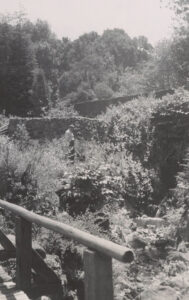
One of the highlights in this expansive and broad collection includes several interviews with individuals from the early days of the United States Forest Service. The interviews detailing the history of forestry could be very useful to someone who wants to trace the evolution of the forestry industry. In addition, if one is working on something involving University of California history or the history of the U.S. Forest Service, particularly in the first half of the twentieth century, these interviews, among the many others present in the collection, would be an invaluable resource for that research.
My personal recommendations for this area would be an interview with Emanuel Fritz, who was a very early practitioner of the forestry field in the United States. He attended Yale School of Forestry and eventually made his way to the University of California in the 1920s, where he became involved with redwoods and assisted the U.S. Forest Service with their second-growth investigation along with other projects of that nature. He also discusses his political experience, particularly his involvement with the California Forest Practice Act of 1945 and his work as a consultant for the Legislative Forest Study Committee in 1944. Another recommendation would be our interview with Edward Kotok who was a researcher for the U.S. Forest Service as well as the assistant chief in charge of state and private forestry work. Some of the highlights of his interview involve him discussing his role as the assistant chief, relationships with Congress, ties between American and European forestry, arguing against the transfer of the U.S. Forest Service to the Department of the Interior, and helping to keep forestry at UC Berkeley.
Water
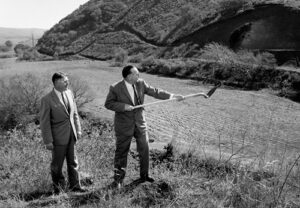
Another incredibly useful and relevant resource in this collection has to do with the history of the struggle over California’s water. Anyone interested or researching the history of California, the impact of the Los Angeles Aqueduct on the Lone Pine region, the California Water Project, irrigation, the United States government’s involvement with water in California and the evolution of the California Water Wars would do well to check out some of these interviews in this collection. Some of the ones I find most interesting and useful would be an interview with Frank Adams, a irrigation specialist who was the author of Bulletin 21, Irrigation Districts in California but also was part of the investigations into the irrigation of California from 1910 to 1924 and was involved in the redrafting of the Soil Conservation Act and the Central Valley Project. In regards to the California Water Project (1955–1961) there is an interview with a key developer of the project, Harvey O. Banks, who reflects on the development and financing of this endeavor, as well as his term as director of the California Division of Water Resources and his work on water-related legislation, such as the Davis-Grunsky, Burns-Porter and San Luis acts.
Horticulture
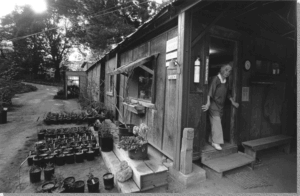
A unique aspect of this collection involves the interviews with horticulturalists. While these interviews might at first glance seem a bit niche in their focus, they offer valuable insights into small businesses in California, horticulture in California in the mid century, California regional history, and the development of plant societies such as the UC Berkeley Botanical Gardens. Interviews that stand out to me in this collection include Edward Carman who ran Ed and Jean Carman’s nursery beginning in 1946 and was an active member of the Los Gatos community, Wayne Roderick, a senior nurseryman for the UC Berkeley Botanical Garden from 1960 to 1976 and Gerda Isenberg, a humanitarian and owner of the Yerba Buena Nursery.
These interviews are among the many that are excellent resources for researchers looking to understand more about the environment, particularly the environment in its relation to conservation groups, water, and education. The Oral History Center’s Natural Resources, Land Use and the Environment – Individual Interviews is a collection of roughly a hundred interviews ranging from oral histories regarding the Sierra Club, United States Forest Service, California Wine Production, California Water Rights and the East Bay Regional Parks District, among many other unique, insightful personal commentaries that give insight into some of the most important aspects of the environment in the United States and abroad.
Find these interviews and all our oral histories from the search feature on our home page. You can search by name, keyword, and several other criteria.
Ricky J. Noel is a recent graduate of UC Berkeley, with a major in history with a Latin American concentration. During his time at Berkeley, Ricky worked with the Oral History Center as an editorial assistant.
Related Resources from The Bancroft Library
“Newton Bishop Drury and the Legacy of the Save the Redwoods League” by Deborah Qu.
Gerda Isenberg papers, 1931-1990. Consists of correspondence, writings, speeches, reports, interviews, subject files, clippings, a scrapbook, photographs and ephemera. BANC MSS 94/210 c.
Harvey O. Banks. Federal-state relations and the California water plan. Bancroft ; 1956?? ; F862.25.I49.
Emanuel Fritz papers, circa 1900-1988. BANC MSS C-B 728.
Forestry photographs from the Emanuel Fritz papers. BANC PIC 1987.057–PIC.
About the Oral History Center
The Oral History Center of The Bancroft Library preserves voices of people from all walks of life, with varying political perspectives, national origins, and ethnic backgrounds. We are committed to open access and our oral histories and interpretive materials are available online at no cost to scholars and the public. You can find our oral histories from the search feature on our home page. Search by name, keyword, and several other criteria. Sign up for our monthly newsletter featuring think pieces, new releases, podcasts, Q&As, and everything oral history. Access the most recent articles from our home page or go straight to our blog home.
